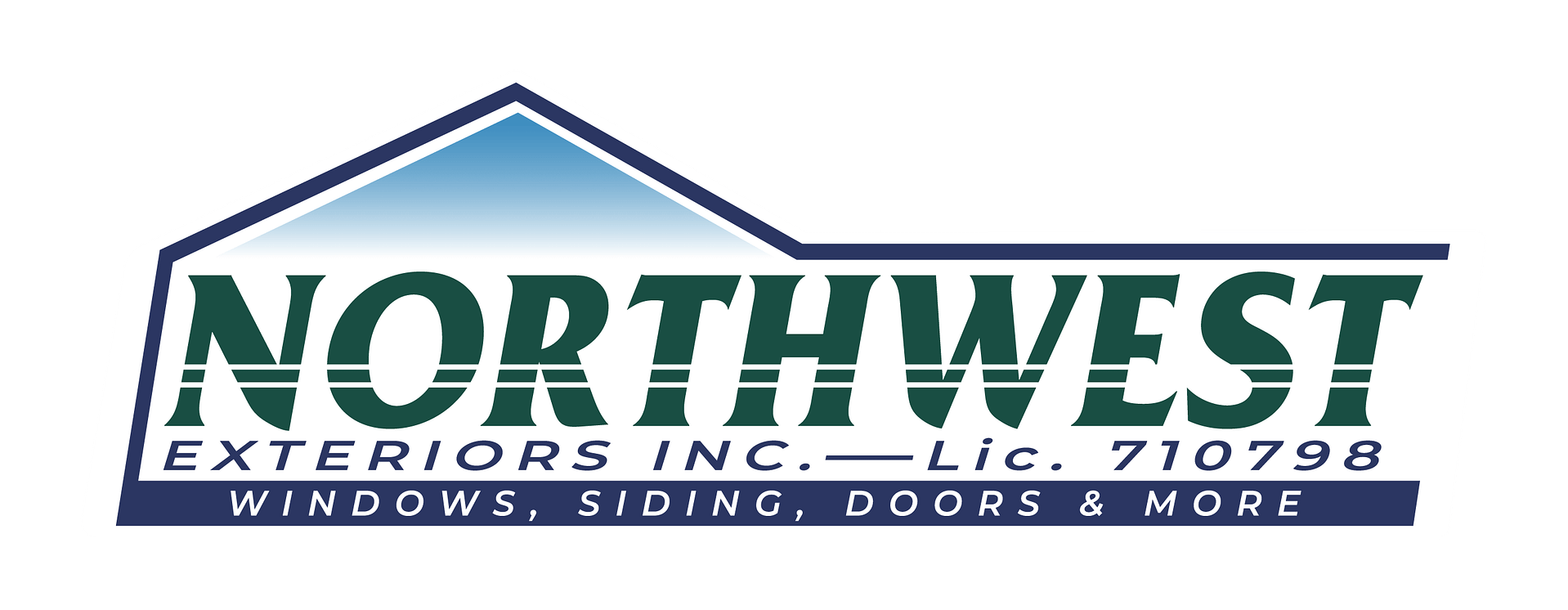
How to Replace Your AC’s Air Filter
If your AC unit isn’t performing at its best, it could be a simple adjustment can get it back on track. Checking that vents aren’t blocked is one way. Another way is to clean or replace the air filter. You’ve probably seen an AC technician inspecting your filters for damage or blockage. You can easily do this, too. Keeping filters on hand for such an occasion is wise and can help you keep your home cool during hot summer months.
Is your air conditioning system not performing as well as it should? Many homeowners overlook the importance of replacing their AC’s air filter, leading to problems like increased energy bills and potential health issues due to mold and mildew. This guide will cover the essential steps for replacing your air filter, how to choose the right filter for your Frigidaire air conditioner, and tips for maintaining your system after replacement. By following these steps, you can improve your AC’s efficiency and minimize the need for emergency AC repair near you.
Understanding the Importance of Regular Air Filter Replacement
Regular replacement of the air conditioning filter is vital for maintaining optimal system performance. An airconditioner filter clogged with dust and pollen can restrict airflow, causing the unit to work harder and consume more energy. Neglecting maintenance may lead to situations where you need emergency AC repair.
Increased dust and allergens in the air can deteriorate indoor air quality, affecting the health of occupants. A clean air filter captures pollutants more effectively, promoting a healthier living environment.
Furthermore, neglecting to change the air filter can lead to mechanical stress on the air conditioning system. Over time, this wear and tear can result in costly repairs or premature system failure.
Replacing the air filter regularly ensures efficient operation and prolongs the life of the air conditioning unit. Homeowners should prioritize this simple maintenance task to preserve comfort and energy efficiency year-round.
Identifying the Right Air Filter for Your AC System
Choosing the correct air filter for an air conditioning system is essential. Evaluating filter types and options, such as the filterbuy 16x25x5 or ac filters 20x25x5, helps customers select the best fit for their needs. Additionally, understanding MERV ratings helps assess filter efficiency and effectiveness in capturing pollutants, contributing to better air quality and system performance.
Evaluating Filter Types and Options
When selecting the right air filter for an AC system, homeowners should consider various types that suit their specific setup. One common option is the duct filter, which works effectively in removing dust and debris from the air circulating through the home. Homeowners may also explore air purifier filters, which can further capture pollutants and improve indoor air quality, helping to create a healthier living environment.
In addition to standard options, filters with activated carbon are particularly beneficial for those sensitive to odors or harmful compounds in the air. These filters not only trap particulates but also neutralize unpleasant smells for fresher air indoors. Evaluating these options based on their filtration efficiency and compatibility with the AC system is crucial for maintaining optimal performance:
Assessing MERV Ratings for Efficiency
Understanding MERV ratings is critical for selecting the best air filter for an AC system. MERV, or Minimum Efficiency Reporting Value, indicates how effectively a filter captures particles like dirt and dust. Homeowners should select filters with higher MERV ratings for better performance, especially in systems using products like Nordic Pure 20x25x5 or April Aire filters, as they enhance indoor air quality by capturing smaller particles.
A MERV rating between 8 and 13 is generally ideal for most residential applications. Filters in this range optimize energy efficiency while making sure the furnace and AC work efficiently, reducing costs over time. Homeowners will benefit by investing in quality filters that match their systems and enhance airflow, significantly lowering the amount of dirt that accumulates in their units:
Tools and Materials Needed for Air Filter Replacement
Gathering essential tools is the first step in the air filter replacement process. This includes a screwdriver, a vacuum, and safety gloves. Selecting quality air filters, such as the filterbuy 20x25x5, provides optimal performance by capturing dust, dander, and allergens effectively. Understanding minimum efficiency reporting value (MERV) ratings helps homeowners choose filters that balance noise reduction and filtration efficiency.
Gathering Essential Tools
Gathering the right tools is crucial when homeowners prepare to replace their air conditioner’s air filter. Essential items include a screwdriver to access the air handler compartment and a vacuum to remove any accumulated dust and particulates. Wearing safety gloves during this process protects against any bacteria and allergens that could be present, significantly reducing the likelihood of exposure to air pollution.
In addition to these tools, homeowners should also have replacement filters on hand that suit their specific system requirements. Opting for high-quality air filters can help capture more particulates and improve overall air quality. Regularly replacing filters not only enhances the efficiency of the HVAC system but also contributes to a healthier indoor environment for all occupants.
Selecting Quality Air Filters
When selecting quality air filters for an air conditioning system, it is essential to consider the filter’s capacity to improve indoor air quality. Filters with higher MERV ratings effectively capture a range of particulates, including dust, pollen, and pet dander. For homeowners focused on both efficiency and air purity, opting for air purifier filters can enhance the overall air flow in conjunction with the HVAC system, promoting a healthier living space.
Quality air filters also play a critical role in protecting the evaporator coil within the system. By trapping contaminants before they enter the system, these filters prevent buildup that could lead to costly repairs or reduced efficiency of the thermostat. Homeowners should prioritize purchasing filters designed to maximize airflow while making sure allergens and pollutants are effectively removed, ultimately preserving the longevity and performance of their HVAC setup.
Step-by-Step Guide to Replacing Your AC’s Air Filter
Powering down the AC unit safely is the first step in changing the air conditioner filter for safety during the process. Next, locating the air filter compartment allows for easy access to the old filter, which should be removed carefully to avoid any mess. Following this, the new filter must be installed properly to maintain optimal airflow. Finally, restarting the AC unit wraps up the task efficiently. This procedure not only prevents odors and improves air quality but also supports the system’s overall performance, certainly protecting the refrigerant and enhancing the effectiveness of ultraviolet lights in filtering the air.
Powering Down Your AC Unit Safely
Powering down the air conditioning unit is an essential first step in replacing the air filter safely. Homeowners should locate the AC’s power switch or circuit breaker and turn it off to prevent any accidental starts during the maintenance process. Taking this precaution ensures a secure environment, reducing the risk of injury when accessing the air filter compartment.
After confirming the unit is powered down, it is advisable to wait a few minutes before proceeding. This waiting period allows any remaining energy in the system to dissipate, further safeguarding against electrical issues. By following these steps, homeowners can confidently move on to the next phase of the filter replacement, knowing they have prioritized safety:
Locating the Air Filter Compartment
Identifying the air filter compartment is a critical step in replacing the air filter of an air conditioning system. This compartment is typically located within the air handler or ductwork, depending on the specific system design. Homeowners can consult their user manual or online resources specific to their model to find the exact location.
Once the air filter compartment is located, it is essential to prepare for safe access. Most units have a cover that can be easily removed by gently tugging or unscrewing it. A quick inspection of the compartment will reveal the old filter, which can then be carefully taken out to make way for the new one. Understanding this process not only simplifies maintenance but also makes sure air quality and system efficiency are maintained:
Removing the Old Air Filter Carefully
Carefully removing the old air filter is a vital step in the replacement process for system efficiency and air quality. To avoid dispersing dust and allergens into the air, homeowners should take their time and handle the old filter gently. Holding the filter by its edges, they must pull it out slowly to minimize any mess and inspect it for excessive dirt or damage, which can indicate the need for more frequent replacements in the future.
Once the old filter is removed, it’s best practice to clean the surrounding area in the air filter compartment to prevent any buildup from affecting the new filter’s performance. This helps maintain optimal airflow and supports the HVAC system’s operation. Keeping track of the filter’s condition can guide homeowners in determining an appropriate replacement schedule based on their specific environment and usage:
Installing the New Air Filter Properly
Installing the new air filter properly is a crucial step that enhances the efficiency of an air conditioning system. Homeowners should be aware of the airflow direction indicated by arrows on the filter. This makes sure the filter operates effectively, capturing dust and allergens while allowing smooth airflow throughout the HVAC system.
Once the new filter is positioned correctly, homeowners should confirm that it fits snugly within the compartment to prevent air leaks. An inadequate fit can compromise air quality and the system’s overall performance. Regularly checking the installation confirms the HVAC system operates efficiently, maintaining comfort and good indoor air quality:
Restarting Your AC Unit
After successfully installing the new air filter, homeowners should proceed to restart their AC unit to resume normal operation. First, they should locate the power switch or circuit breaker and turn the AC back on, making sure the system is receiving power. This step is essential for checking that the replacement has been done correctly and that the system operates efficiently.
Once the unit is powered on, it is important to monitor the airflow and listen for any unusual noises that may indicate improper installation. A properly functioning AC should produce a consistent sound without any rattling or vibrating. Restarting the AC after filter replacement not only reactivates the system but also promotes optimal airflow and improved indoor air quality, addressing common concerns homeowners face regarding air contaminants.
Maintaining Your AC System After Filter Replacement
Post-replacement maintenance of an AC system is essential for optimal performance and air quality. Setting reminders for future filter changes helps homeowners keep the system running efficiently. Additionally, monitoring air quality improvements will help in identifying the effectiveness of recent changes and highlight the benefits of consistent maintenance practices.
Setting Reminders for Future Replacements
Setting reminders for air filter replacements is vital so home heating and cooling systems remain efficient. Homeowners can utilize digital calendar applications or simple note reminders to stay on track. This proactive approach minimizes the risk of forgetting filter changes, ultimately enhancing indoor air quality and promoting smoother operation of the air conditioning unit.
Regularly replacing air filters helps prevent allergens and dust buildup, which can cause discomfort and health issues. By establishing a consistent schedule, homeowners can easily integrate filter maintenance into their routines. This method not only increases system longevity but also contributes to sustained energy efficiency, resulting in a more comfortable living environment all year round.
Monitoring Air Quality Improvements
Monitoring air quality improvements following an air filter replacement offers homeowners a tangible way to assess the effectiveness of their HVAC system. By conducting regular checks on indoor air quality using simple tools like air quality monitors, homeowners can observe reductions in dust, allergens, and other pollutants. This proactive approach not only makes sure air filters function optimally but also highlights the benefit of replacing filters regularly.
In addition to using air quality monitors, homeowners can pay attention to changes in symptoms related to allergies or respiratory issues. Improved indoor air quality often correlates with a decrease in such symptoms, indicating that the new air filter effectively captures unwanted particles. By maintaining awareness of these improvements, homeowners can reinforce the importance of regular filter replacements and enjoy a healthier living environment.
Troubleshooting Issues Related to Air Filter Replacement
Homeowners may encounter several common issues after replacing their air conditioning filters. Identifying these problems early, such as unusual noises or reduced airflow, is crucial for maintaining system efficiency. Understanding when to seek professional assistance can provide optimal functionality and comfort. This section explores typical post-replacement challenges and guidelines for knowing when expert help is necessary.
Identifying Common Problems Post-Replacement
After replacing an air filter, homeowners may notice issues such as strange noises or decreased airflow from their air conditioning system. These symptoms can indicate improper installation or that the new filter is not compatible with the unit. It is essential to verify that the filter is correctly positioned and securely fitted within the compartment to maintain optimal performance and prevent any disruptions in airflow.
In some cases, if the air conditioner continues to underperform, homeowners should consider checking for leaks in the ductwork or assessing the overall health of the HVAC system. Regular maintenance and monitoring can prevent more significant problems down the line. Addressing these common issues promptly keeps the air conditioning system operating efficiently and enhances indoor air quality:
When to Seek Professional Assistance
If unusual noises persist after replacing the air filter, it may indicate a deeper issue with the air conditioning system. Homeowners should not hesitate to contact a professional HVAC technician to inspect the unit. Ignoring these sounds can lead to more significant damage, resulting in costly repairs and decreased efficiency.
Similarly, if airflow remains weak despite a new filter installation, it could signal problems within the ductwork or the overall HVAC system. Seeking assistance from an experienced technician is advisable in such situations. They can accurately assess and resolve underlying issues, restoring optimal comfort and air quality in the home.
Frequently Asked Questions About Air Filter Replacement
This section addresses common inquiries regarding air filter replacement for HVAC systems. It covers how often homeowners should replace their AC filter, the possibility of cleaning and reusing filters, and the signs that indicate a filter change is necessary. Understanding these aspects will assist in maintaining system efficiency and delivering optimal indoor air quality.
How Often Should I Replace My AC Filter?
Homeowners should generally replace their AC filter every one to three months, depending on factors such as usage and the presence of pets. Frequent use during hot weather or having multiple furry companions can accelerate dust and allergen buildup, requiring more frequent changes to maintain optimal indoor air quality. Regularly inspecting the filter can help determine the right schedule for replacement.
A simple rule of thumb is to check the filter monthly, especially during peak usage seasons. If the filter appears dirty or clogged, it should be replaced immediately for efficient airflow and system performance. Keeping track of replacement dates can significantly enhance the longevity and effectiveness of the HVAC system:
Can I Clean and Reuse My Air Filter?
Cleaning and reusing an air filter is possible, but it depends on the type of filter in use. Many standard filters are designed for single use, and attempting to clean them may not restore their efficiency. In contrast, some reusable filters can be washed and put back into service, as long as they are durable and properly maintained. Homeowners should always check the manufacturer’s recommendations to make sure they do not compromise the filter’s effectiveness and the HVAC system’s performance.
While cleaning can seem like a cost-saving measure, it’s essential to consider potential drawbacks. If the filter is not thoroughly cleaned or dried, it could lead to mold growth, which can negatively impact indoor air quality. Therefore, rather than cleaning, homeowners might find it more effective to replace the filter regularly for optimal performance and air quality within their homes:
What Signs Indicate a Filter Change Is Needed?
Homeowners should be vigilant for signs indicating that an air filter change is necessary. A visible layer of dust or dirt on the filter is a strong indicator that it has reached its capacity to capture particles and requires replacement. Additionally, if the HVAC system struggles to maintain the desired indoor temperature or airflow feels weakened, these symptoms may suggest a clogged filter that compromises efficiency.
Another common sign of a needed filter change is an increase in allergens or dust accumulation within the home. If occupants notice heightened allergy symptoms, such as sneezing or respiratory discomfort, it could point to inadequate filtration by the current air filter. Addressing these signs promptly by changing the air filter can significantly enhance indoor air quality and restore the HVAC system’s performance, securing a comfortable living environment for all.






